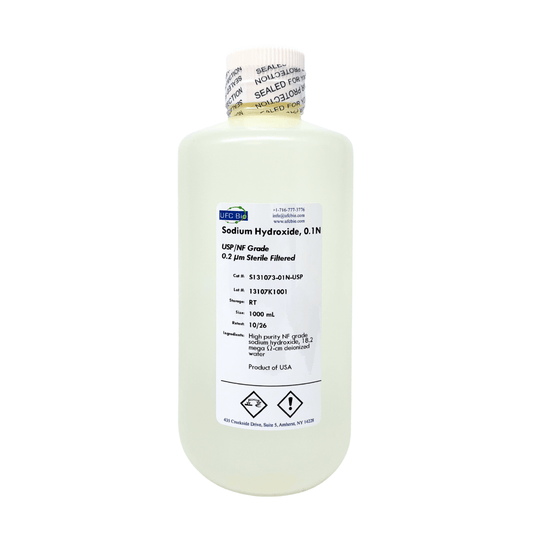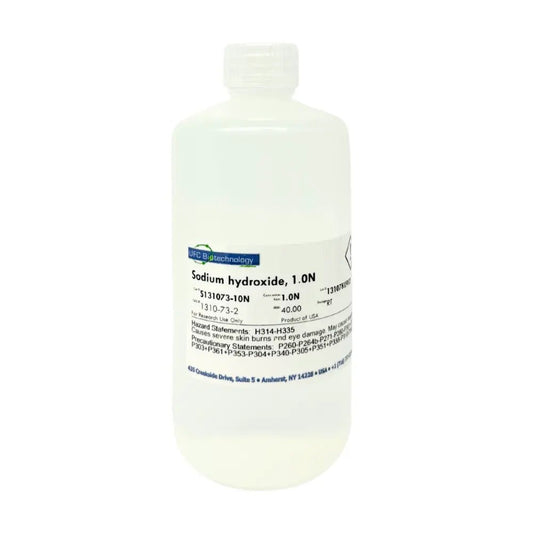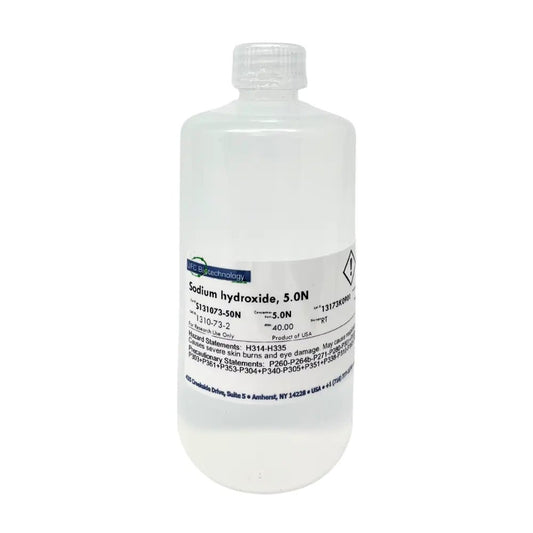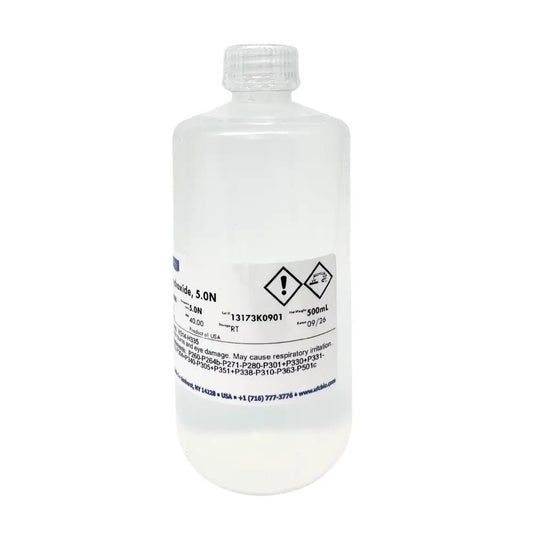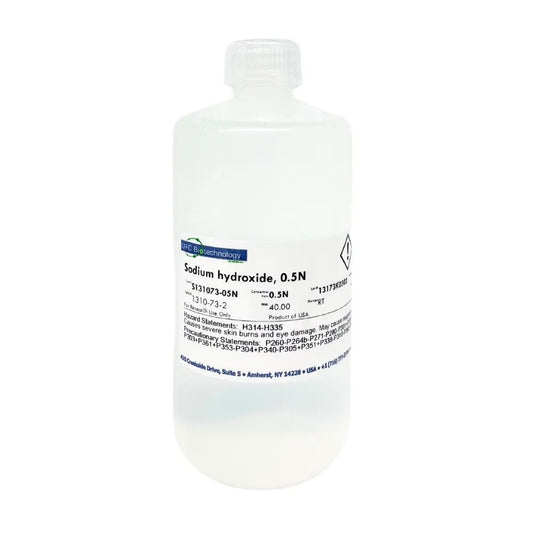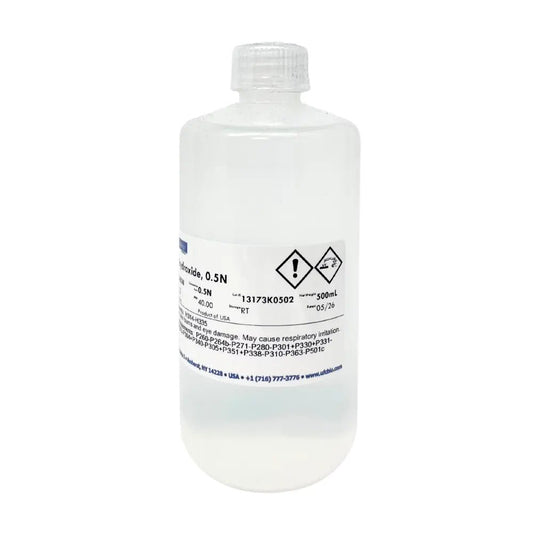Collection: Bases
UFC Bio’s Bases collection has high-purity solutions. One example is 1.0N Sodium Hydroxide Solution. It is great for titrations and pH adjustments. Each product is tested to ensure consistent quality and performance.
Free U.S. shipping over $50
-
0.1N Sodium Hydroxide Solution - USP/NF Grade - 1 L
Regular price $60.50 USDRegular priceUnit price / per -
1.0N Sodium Hydroxide (NaOH)
Regular price From $19.99 USDRegular priceUnit price / per -
5.0N Sodium Hydroxide (NaOH), 500 mL
Regular price $22.99 USDRegular priceUnit price / per -
0.10N Sodium Thiosulfate Solution
Regular price From $37.50 USDRegular priceUnit price / per -
0.5N Sodium Hydroxide (NaOH), 500 mL
Regular price $18.99 USDRegular priceUnit price / per

